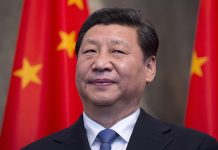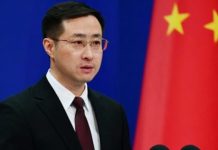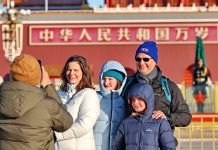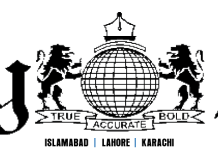Harold J. Timperley was a journalist who spent years in China during the tumultuous period leading up to and during the Chinese People’s War of Resistance Against Japanese Aggression (1931-45). He served as a correspondent for various news outlets and became a witness to the horrors inflicted upon the Chinese people by the invading Japanese forces. What War Means, published in 1938, is a book he edited, which contains harrowing accounts of those experiences as well as official documents. It documented the atrocities of the war, most notably the Nanjing Massacre, offering a first-hand record on the brutality suffered by civilians and unarmed soldiers. As China commemorates the 80th anniversary of the victory of the war against Japanese aggression and the World Anti-Fascist War, Einar Tangen, a commentator and senior researcher with Taihe Institute in Beijing, reflected on What War Means, unveiling the nature of human cruelty, and the disturbing parallels between the wartime ideologies that fueled such atrocities and contemporary political trends.
War is not merely a clash of armies or ideologies—it is a crucible that reveals the darkest recesses of human nature. Beneath the banners and speeches, war reduces men to beasts, driven to inhumanity by monsters who use fear, pride, and hatred to manipulate. The Nanjing Massacre stands as one of the most harrowing examples of this transformation: A moment when ordinary soldiers, under the influence of fascist ideology and notions of racial supremacy, committed unspeakable acts against civilians.
This essay explores how such atrocities come to pass—not as isolated eruptions of violence, but as engineered outcomes of political ambition and cultural indoctrination. From ancient conquests to modern populism, the thread of brutality runs unbroken. And unless we confront it, it will continue to unravel the fabric of our shared humanity.
Men as beasts driven to inhumanity by monsters
It has been 80 years since the end of the Chinese People’s War Against Japanese Aggression and the World Anti-Fascist War. In many ways, unfortunately, the war is not over though. Even today, historical narratives of fact are disputed by the self-serving hypocrisy of those defeated, who teach their children that Nanjing was an “incident” and that Japan was only guilty of being defeated. On a different level, the war was neither the beginning nor the end of the evils humans are capable of.
In Timperley’s memoir What War Means, he painstakingly laid out the verified events he witnessed and could document. It is a brutal list of horrors—indiscriminate killing, raping, and torturing of children, women, and men, and some tragically ironic moments, such as when the Japanese were trying to restart the electricity plant, after they massacred the civilians who worked there. He lamented about the stupidity of wars driven by those who used dehumanizing propaganda to instigate the barbarian killings and organized wholesale looting and pillaging. He went into detail about the failure of officers to reign in—and sometimes encouragement of—acts such as using live men for bayonet practice.
While the accounts serve as a ledger of atrocities, they fail to connect the events to the colonial conquests of the past, or what would be necessary to keep humanity from doing it again. This most relevant larger picture is what this essay will deal with.
Human history is steeped in blood. The Crusades, cloaked in religious fervor, saw Christian armies slaughter entire populations in the name of salvation. Genghis Khan’s campaigns left cities razed and skulls stacked in pyramids. Rome institutionalized cruelty, turning execution into entertainment and conquest into spectacle. These were not aberrations—they were expressions of power through terror.
World War I marked a turning point. Mechanized warfare, trench slaughter, and chemical weapons shocked the world into recognizing the need for limits. The Geneva Conventions (to ameliorate the effects of war on soldiers and civilian) emerged as a fragile promise: That even in war, humanity must not be abandoned. But promises are only as strong as the will to uphold them.
The monster-making machinery
Japan’s transformation from an isolated archipelago to an imperial power was rapid and radical. The arrival of U.S. Navy Commodore Perry’s Black Ships in 1853 shattered centuries of seclusion. The Meiji Restoration followed, ushering in industrialization, militarization, and a fervent nationalism that sought parity with Western powers.
To justify its expansion, Japan adopted an anticolonial narrative—proclaiming as an imperative, its right to liberate Asia from Western domination. In reality, it replicated colonial brutality. Korea was annexed in 1910, its language and culture systematically erased. Schools taught Japanese history and regarding Japanese as superior, and resistance was crushed. This became the blueprint for Japan’s further conquest.
China, vast and fractured, was the next victim. The Mukden Incident (on September 18, 1931) and the Marco Polo Bridge skirmish (on July 7, 1937) became pretexts for Japan’s invasion of China. Japanese elites framed the war as a civilizing mission, but their true aim was domination. The propaganda machine painted Chinese people as inferior, setting the stage for dehumanization on a massive scale.
The descent into barbarism began with language. Japanese textbooks taught racial superiority. Soldiers were indoctrinated to see Chinese civilians not as people, but as obstacles. Orders from above encouraged brutality, framing it as duty.
Group psychology played a role. In the chaos of war, moral boundaries blur. Soldiers, stripped of individual accountability, become instruments of collective violence. Shame is buried beneath obedience and fear. The transformation is complete: Citizens become predators, and monsters wear the masks of leadership.
In December 1937, Japanese forces invaded Nanjing. What followed was six weeks of terror. Eyewitness accounts—preserved by missionaries, diplomats, and journalists—paint a chilling picture. The Memorial Hall of the Victims in Nanjing Massacre by Japanese Invaders, located in Nanjing, houses these testimonies, each a fragment of horror.
Civilians were executed en masse. Women were raped, mutilated, and murdered. Children were not spared. The city’s infrastructure was destroyed—not for strategic gain, but to instill fear. The power plant was disabled by killing its staff. Looted trains carried stolen goods. Bombs fell indiscriminately. This was not conquest—it was annihilation.
Amid the carnage, a few foreigners acted heroically. John Rabe, a German businessman and Nazi Party member, created a Safety Zone that sheltered hundreds of thousands. Minnie Vautrin, an American missionary, protected women in her school. Their foreign identities gave them leverage.
Nanjing was not an anomaly. It was part of a continuum. The Crusades, Mongol invasions, colonial conquests by Spain, France, England, and the Netherlands—all were marked by dehumanization and terror. The 20th century added new chapters: the Holocaust, the Nanjing Massacre, Rwanda, Syria.
Fascism’s recurring shadow
Fascism thrived on fear. It elevated a leader as savior, vilified “others,” and silenced dissent. Japan’s wartime ideology was fascist in nature—militaristic, xenophobic, and absolutist.
But fascism did not die in 1945. It receded, mutated, and reemerged. Today, populist leaders across the globe promise simple solutions to complex problems. They scapegoat migrants, minorities, and dissenters. In Israel, nationalist rhetoric has led to the Palestinian genocide. In Europe, Germany, the Netherlands, France, and Italy, among others, have seen the rise of far-right parties with racist, anti-immigrant platforms, and nostalgia for fascist-era symbols
These tactics echo the past. The architects of inhumanity are not gone—they are merely rebranded.
But memory fades. Generations change. The relevance of Nanjing dims unless we make it personal. These horrors are not relics—they must be warnings that, but for time and circumstance, this could be happening to us.
To document atrocity is to resist forgetting. We must keep in mind not just the facts, but also the fragility of civilization. We must confront the darkness within, and identify the monsters who seek to unleash it. Only then can we hope to break the cycle. Only then can the inhuman brutality of war lose its grip on our souls. –The Daily Mail-Beijing Review News exchange item





